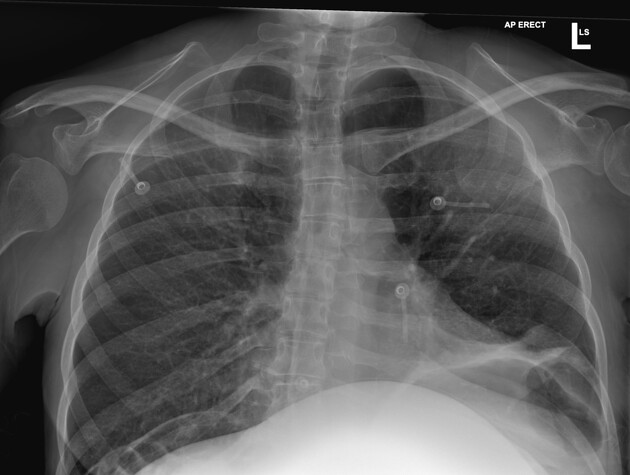Citation, DOI, disclosures and article data
Citation:
Weerakkody Y, Saber M, Hacking C, et al. Facioscapulohumeral muscular dystrophy. Reference article, Radiopaedia.org (Accessed on 27 Mar 2025) https://doi.org/10.53347/rID-61011
Facioscapulohumeral muscular dystrophy (FSHD) is a form of muscular dystrophy characterised by extremely variable degrees of facial, scapular and upper limb muscle involvement.
It is considered one of the more common hereditary muscular disorders with a prevalence of ~1 in 8,000.
Initially there may be a restricted pattern of weakness with early involvement of the facial and scapular stabiliser muscles and with a descending course resulting in later involvement of either the distal anterior leg or hip-girdle muscles.
Genetics
It carries an autosomal dominant inheritance.
Two types have been described:
Radiography
CXR and pectoral girdle radiographs will show elevated scapulae (winging).
MRI
MRI is considered sensitive and may show a specific pattern of muscle fatty replacement and atrophy, particularly in upper girdle muscles.
The most frequently affected muscles are trapezius, teres major and serratus anterior. Asymmetric muscle involvement maybe significantly higher in FSHD as compared to non-FSHD 1.
Whole body MRI may be useful to assess the pattern of muscle involvement.
Treatment and prognosis
Its severity and disease course can vary considerably.
-
1. Gerevini S, Scarlato M, Maggi L, Cava M, Caliendo G, Pasanisi B, Falini A, Previtali SC, Morandi L. Muscle MRI findings in facioscapulohumeral muscular dystrophy. (2016) European radiology. 26 (3): 693-705. doi:10.1007/s00330-015-3890-1 - Pubmed
-
2. Tawil R, Van Der Maarel SM. Facioscapulohumeral muscular dystrophy. (2006) Muscle & nerve. 34 (1): 1-15. doi:10.1002/mus.20522 - Pubmed
-
3. Butz M, Koch MC, Müller-Felber W, Lemmers RJ, van der Maarel SM, Schreiber H. Facioscapulohumeral muscular dystrophy. Phenotype-genotype correlation in patients with borderline D4Z4 repeat numbers. (2003) Journal of neurology. 250 (8): 932-7. doi:10.1007/s00415-003-1116-y - Pubmed
-
4. Fisher J, Upadhyaya M. Molecular genetics of facioscapulohumeral muscular dystrophy (FSHD). (1997) Neuromuscular disorders : NMD. 7 (1): 55-62. Pubmed
-
5. Leung DG, Carrino JA, Wagner KR, Jacobs MA. Whole-body magnetic resonance imaging evaluation of facioscapulohumeral muscular dystrophy. (2015) Muscle & nerve. 52 (4): 512-20. doi:10.1002/mus.24569 - Pubmed
-
6. Mul K, Lassche S, Voermans NC, Padberg GW, Horlings CG, van Engelen BG. What's in a name? The clinical features of facioscapulohumeral muscular dystrophy. (2016) Practical neurology. 16 (3): 201-7. doi:10.1136/practneurol-2015-001353 - Pubmed
-
7. Statland J, Tawil R. Facioscapulohumeral muscular dystrophy. (2014) Neurologic clinics. 32 (3): 721-8, ix. doi:10.1016/j.ncl.2014.04.003 - Pubmed
Promoted articles (advertising)





 Unable to process the form. Check for errors and try again.
Unable to process the form. Check for errors and try again.